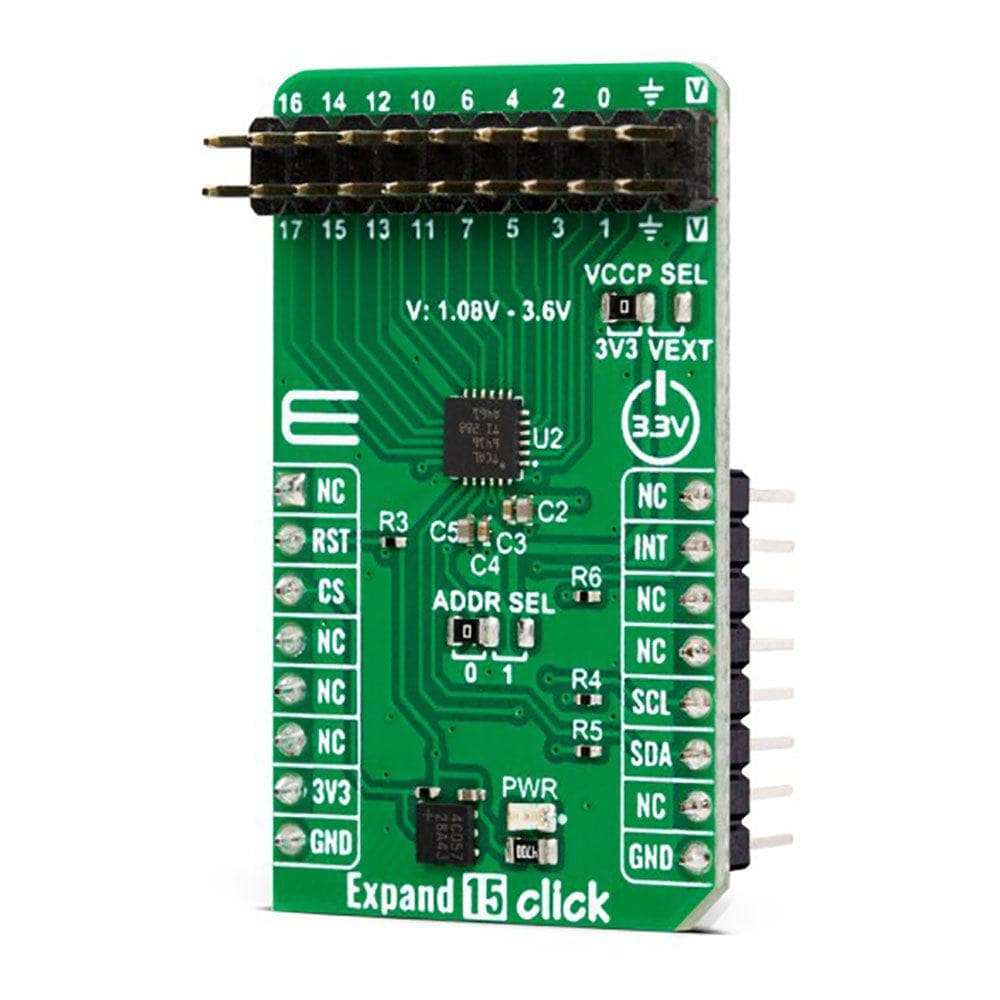
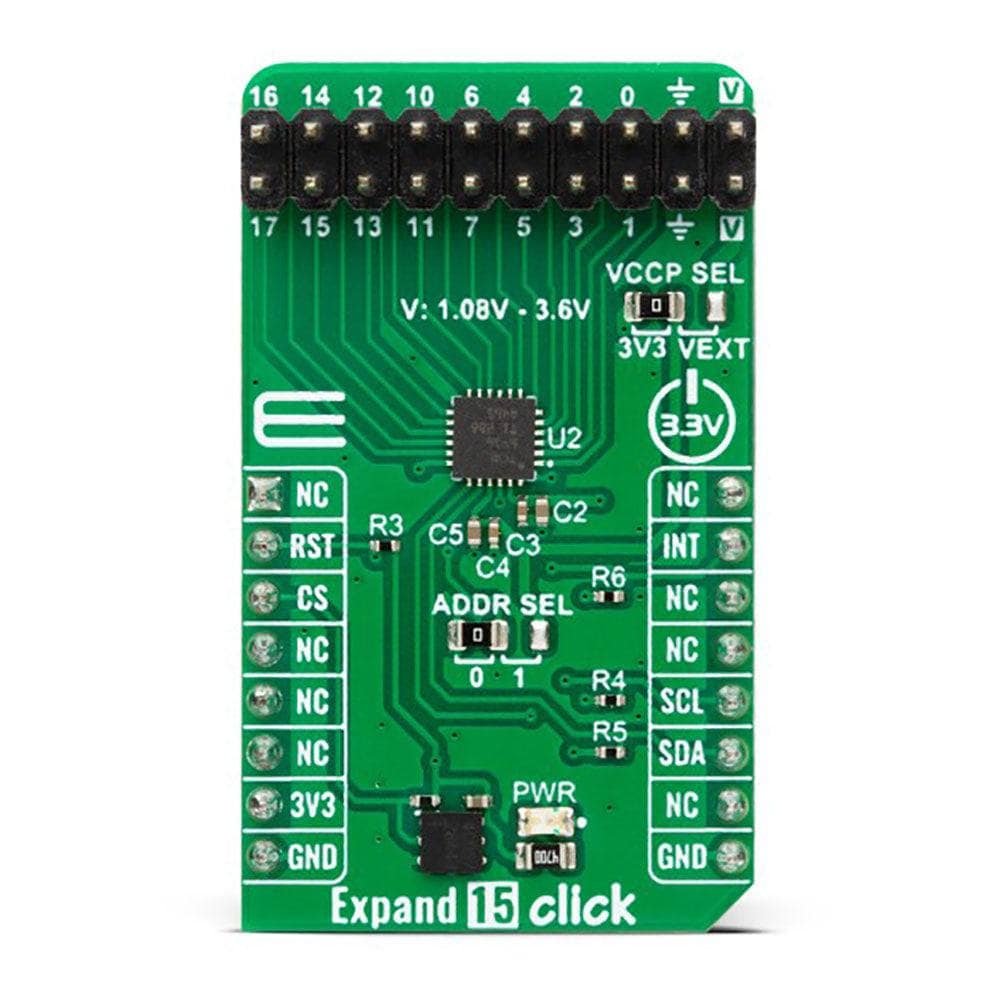
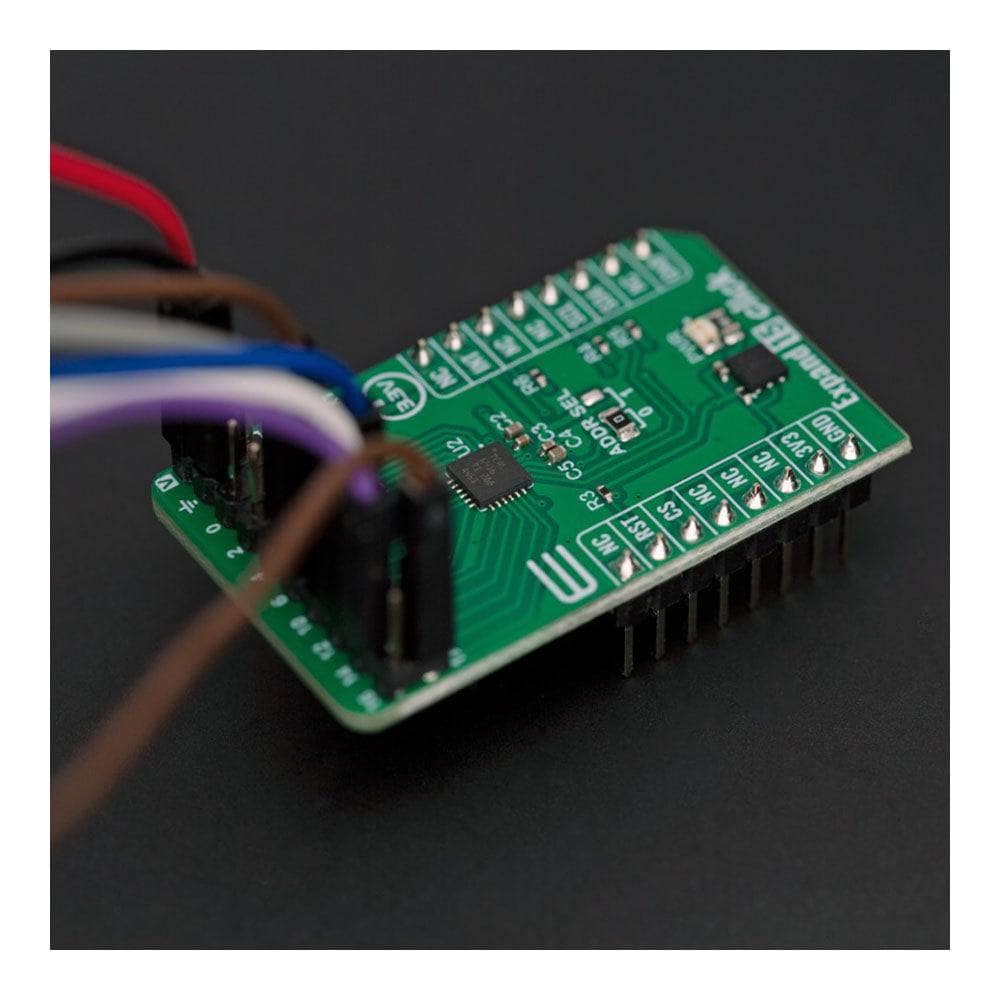
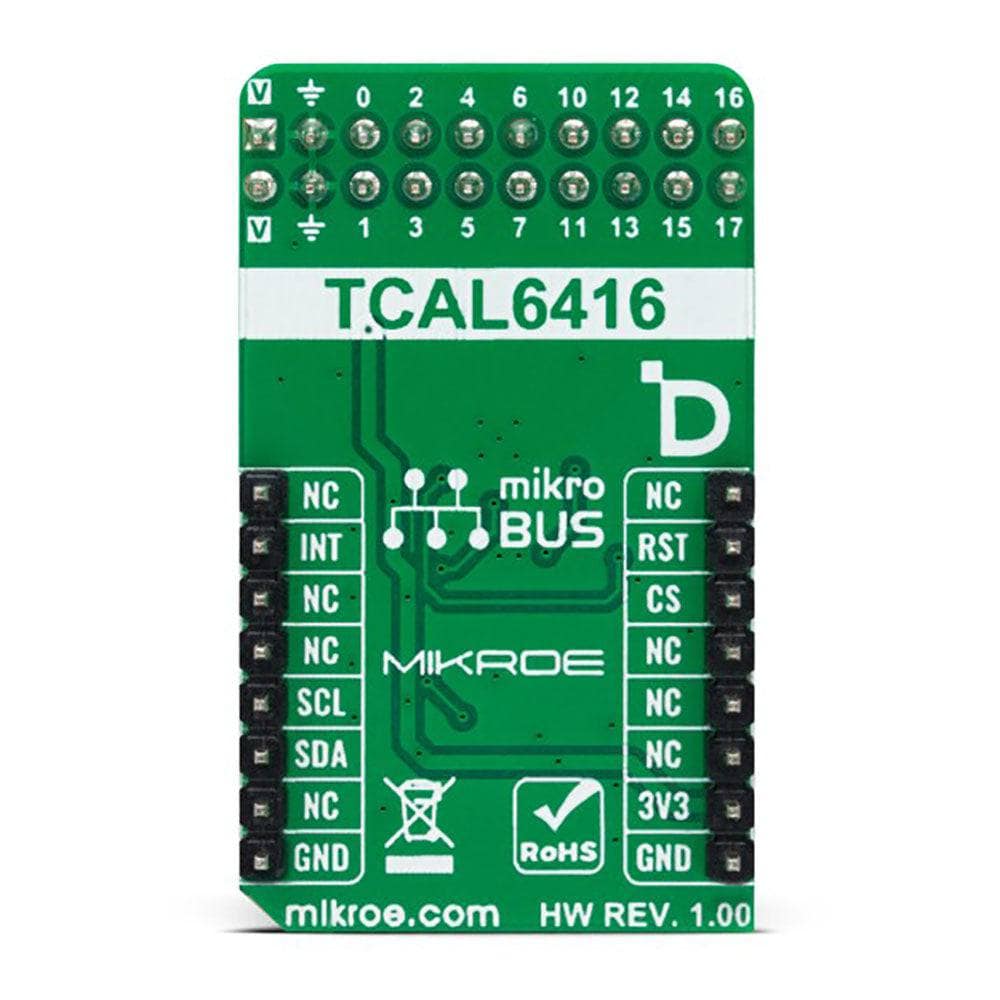
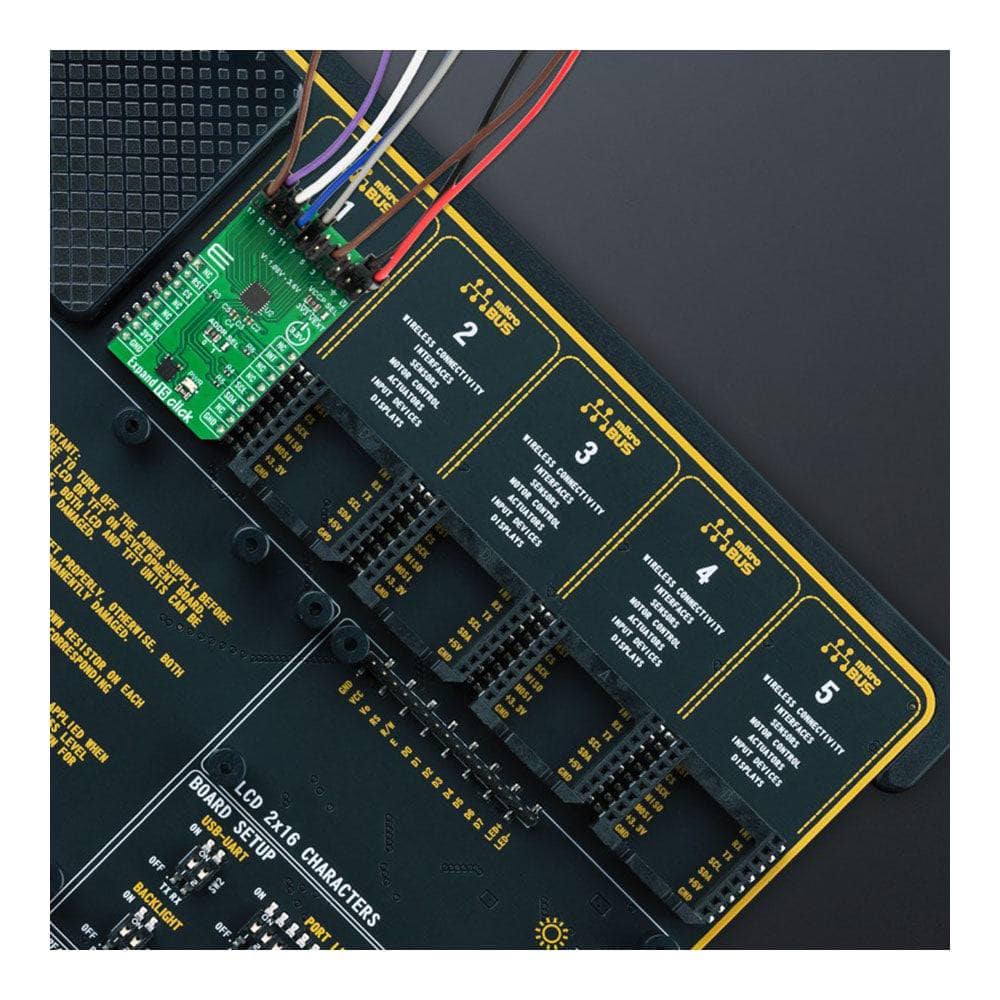
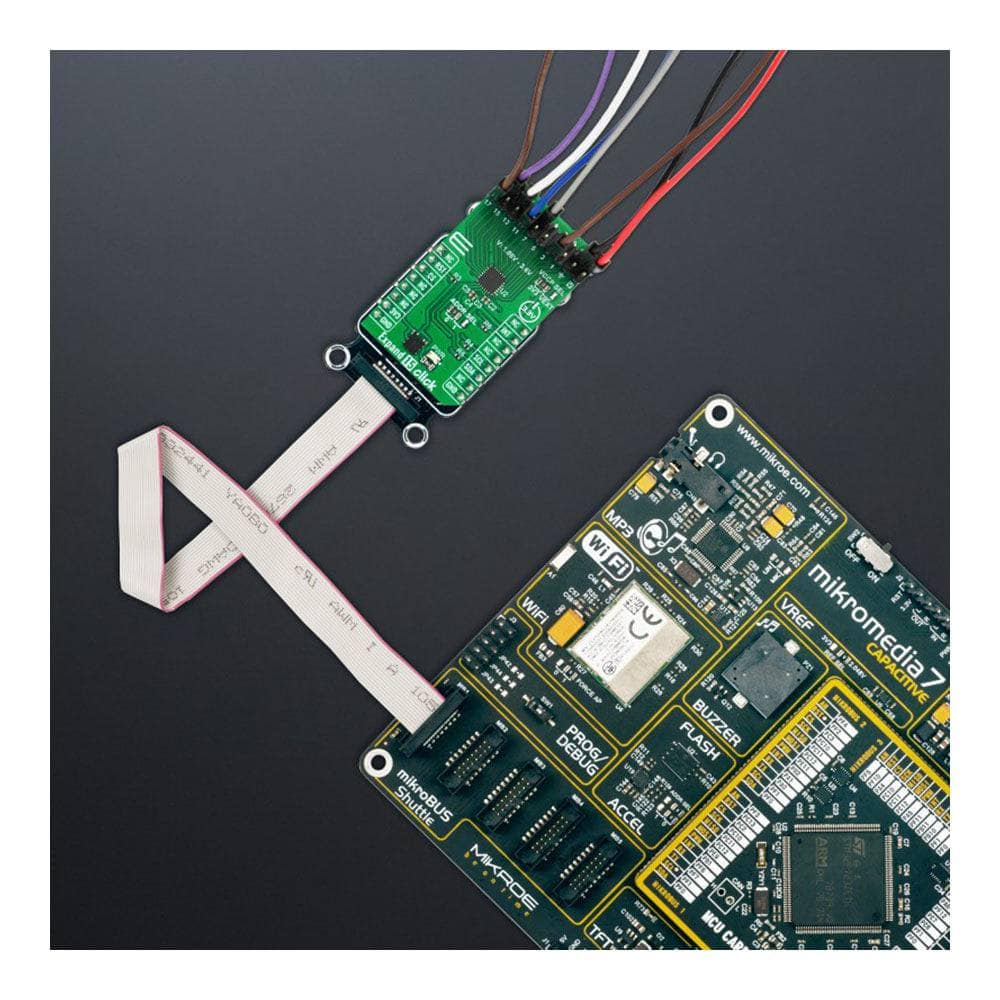
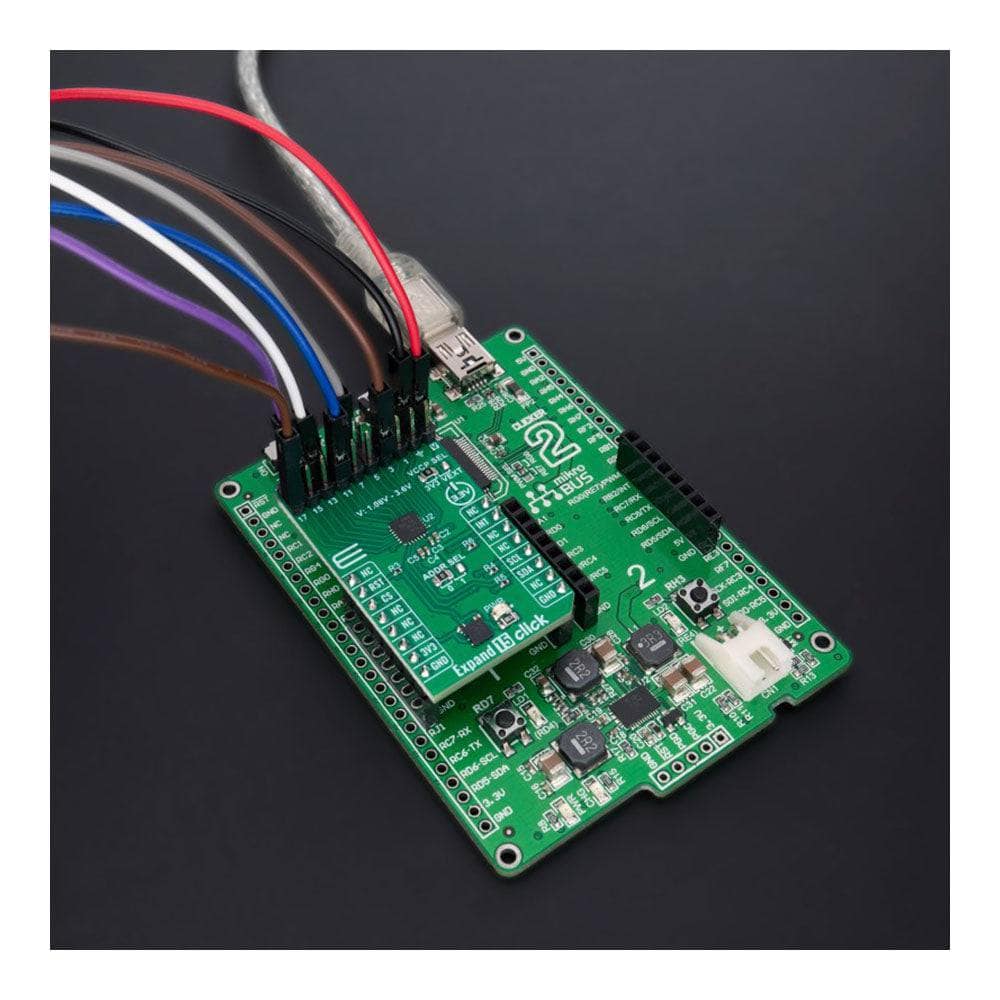
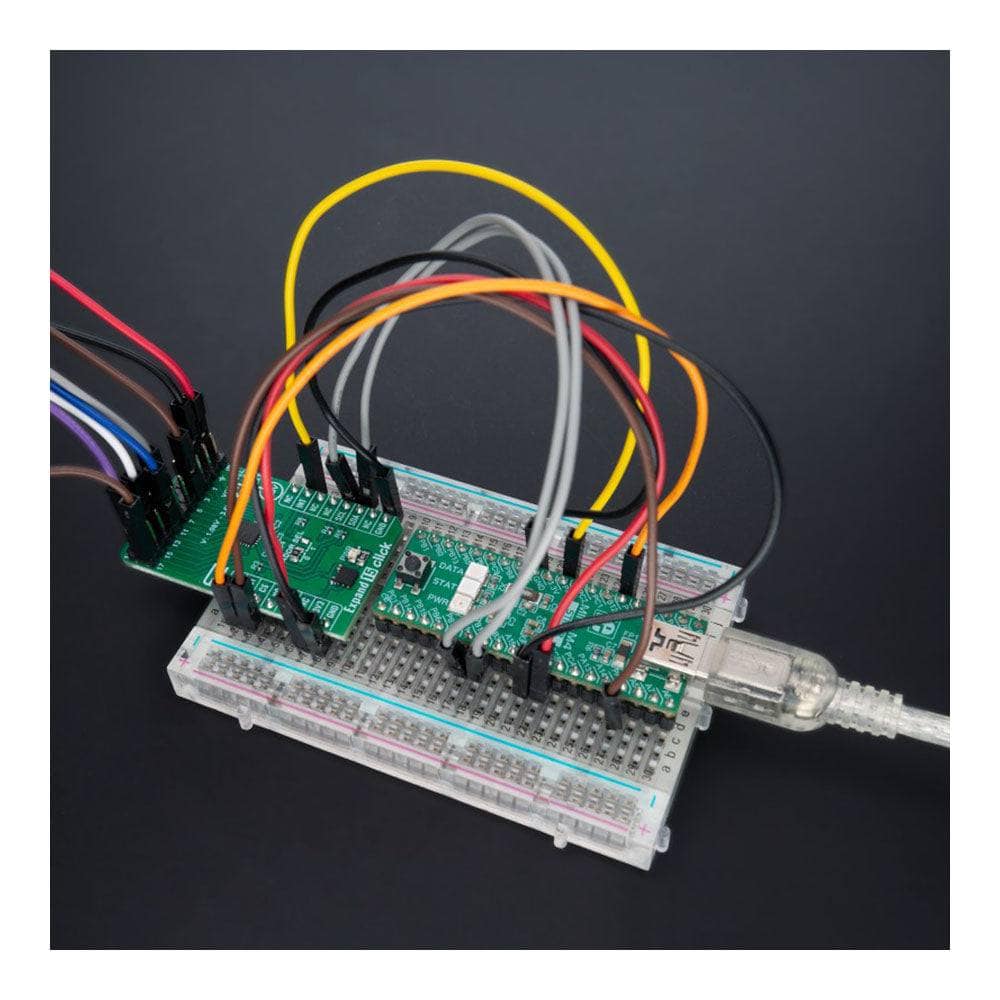
Key Features
Overview
Introducing the Expand 15 Click Board™: A Powerful Multi-Channel I/O Expander
Unleash the potential of your microcontroller with the Expand 15 Click Board™, a compact and versatile multi-channel I/O expander. This powerful add-on board features the TCAL6416, a high-quality general-purpose I/O expansion designed by Texas Instruments, compatible with most microcontroller families. Unlock unparalleled convenience and flexibility by easily adding I/O through the standard I2C serial interface.
Customizable and Feature-Rich for Maximum Versatility
The user-configurable P-port ensures seamless integration with your project's needs, allowing you to choose between logic input or output by adjusting the I/O configuration register bits. The Expand 15 Click Board™ boasts various additional features, including programmable output drive strength, pull-up and pull-down resistors, latchable inputs, maskable interrupt, interrupt status register, and programmable open-drain or push-pull outputs. It's the perfect solution for expanding your I/O capabilities for switches, sensors, push buttons, LEDs, fans, and more.
Effortless Software Development with mikroSDK Support
Streamline your software development process with the Expand 15 Click Board™, supported by a mikroSDK-compliant library. This library includes user-friendly functions that make software development a breeze. As a fully tested product, the Expand 15 Click Board™ is ready for immediate use on any system equipped with the mikroBUS™ socket. Enhance your projects and extend your microcontroller's capabilities with the Expand 15 Click Board™ today!
Downloads
How Does The Expand 15 Click Board™ Work?
The Expand 15 Click Board™ is based on the TCAL6416, a general-purpose I/O expander from Texas Instruments. The TCAL6416 comes in one P-port configuration and allows easy addition of I/O through a standard I2C serial interface. Its digital core consists of 8-bit data registers, allowing users to configure the I/O port characteristics. The I/Os are configured as inputs at Power-On or after a Reset condition. However, the host controller can configure the I/Os as either inputs or outputs by writing to the Configuration registers. The data for each input or output is kept in the corresponding Input Port or Output Port register, with the possibility to invert the polarity of the Input Port with the Polarity Inversion register. The P-port channels configured as outputs can sink up to 25mA for directly driving LEDs, but the current must be limited externally with additional resistance.
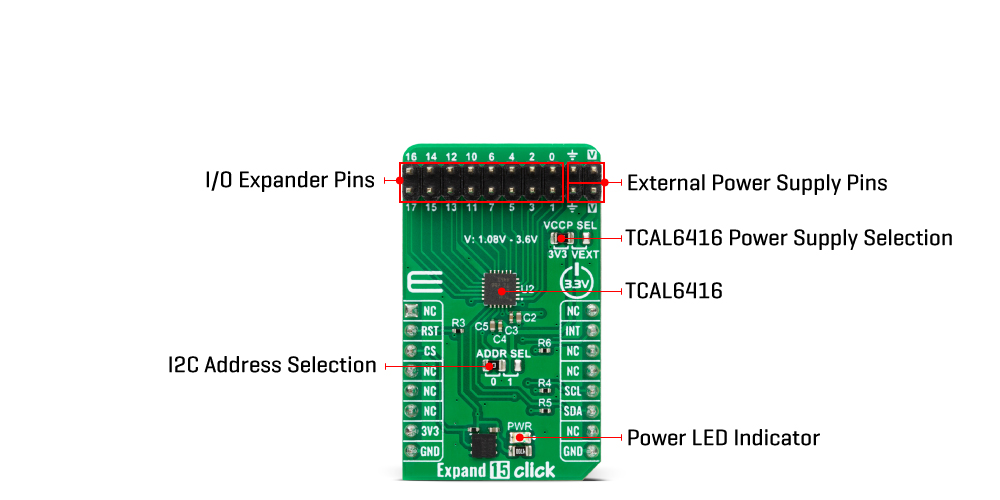
Additionally, the TCAL6416 has Agile I/O functionality specifically targeted to enhance the I/O ports, including programmable output drive strength, programmable pull-up and pull-down resistors, latchable inputs, maskable interrupts, interrupt status register, and programmable open-drain or push-pull outputs. These configuration registers improve the I/O by increasing flexibility and allowing users to optimize their power consumption, speed, and EMI design.
This Click board™ communicates with MCU using the standard I2C 2-Wire interface to read data and configure settings with a maximum frequency of 1MHz. Also, the TCAL6416 allows choosing the least significant bits (LSB) of its I2C slave address using the SMD jumper labelled ADDR SEL. It also possesses a general reset signal routed on the RST pin of the mikroBUS™ socket to reset the TCAL6416, and an additional interrupt signal, routed on the INT pin of the mikroBUS™ socket whenever an input port changes state.
The Expand 15 Click Board™ can only be operated with a 3.3V logic voltage level. Additionally, there is a possibility for the TCAL6416 power supply selection via jumper labelled VCCP SEL to supply the TCAL6416 from 1.08V to 3.6V external power supply (V pin) or with 3V3 mikroBUS™ power rail. The board must perform appropriate logic voltage level conversion before using MCUs with different logic levels. However, the Click board™ comes equipped with a library containing easy-to-use functions and an example code that can be used, as a reference, for further development.
SPECIFICATIONS
| Type | Port expander |
| Applications | It provides a simple solution when additional I/Os are needed for switches, sensors, push-buttons, LEDs, fans, and more. |
| On-board modules | TCAL6416 - I/O expander from Texas Instruments |
| Key Features | Allows bidirectional voltage-level translation and GPIO expansion, low power consumption, fast I2C interface, selectable I2C address, reset and interrupt features, polarity inversion register, various programmable features like output drive strength, pull resistors, and more |
| Interface | I2C |
| Compatibility | mikroBUS |
| Click board size | M (42.9 x 25.4 mm) |
| Input Voltage | 3.3V,External |
PINOUT DIAGRAM
This table shows how the pinout of the Expand 15 Click Board™ corresponds to the pinout on the mikroBUS™ socket (the latter shown in the two middle columns).
| Notes | Pin |  |
Pin | Notes | |||
|---|---|---|---|---|---|---|---|
| NC | 1 | AN | PWM | 16 | NC | ||
| Reset | RST | 2 | RST | INT | 15 | INT | Interrupt |
| NC | 3 | CS | RX | 14 | NC | ||
| NC | 4 | SCK | TX | 13 | NC | ||
| NC | 5 | MISO | SCL | 12 | SCL | I2C Clock | |
| NC | 6 | MOSI | SDA | 11 | SDA | I2C Data | |
| Power Supply | 3.3V | 7 | 3.3V | 5V | 10 | NC | |
| Ground | GND | 8 | GND | GND | 9 | GND | Ground |
ONBOARD SETTINGS AND INDICATORS
| Label | Name | Default | Description |
|---|---|---|---|
| LD1 | PWR | - | Power LED Indicator |
| JP1 | VCCP SEL | Left | TCAL6416 Power Supply Selection 3V3/VEXT: Left position 3V3, Right position VEXT |
| JP2 | ADDR SEL | Left | I2C Address Selection 0/1: Left position 0, Right position 1 |
EXPAND 15 CLICK ELECTRICAL SPECIFICATIONS
| Description | Min | Typ | Max | Unit |
|---|---|---|---|---|
| Supply Voltage | - | 3.3 | - | V |
| External Power Supply VEXT | 1.08 | - | 3.6 | V |
| General Information | |
|---|---|
Part Number (SKU) |
MIKROE-5679
|
Manufacturer |
|
| Physical and Mechanical | |
Weight |
0.02 kg
|
| Other | |
Country of Origin |
|
HS Code Customs Tariff code
|
|
EAN |
8606027384790
|
Warranty |
|
Frequently Asked Questions
Have a Question?
-
Is the Expand 15 Click Board™ easy to use?
Yes, the Expand 15 Click Board™ is easy to use. It comes with a mikroSDK-compliant library that includes functions to simplify software development. The board is also fully tested and ready for use on a system equipped with the mikroBUS™ socket.
-
What applications can the Expand 15 Click Board™ be used for?
The Expand 15 Click Board™ is ideal for applications that require additional I/Os, such as switches, sensors, push-buttons, LEDs, fans, and more.
-
What additional features does the TCAL6416 offer?
The TCAL6416 offers programmable output drive strength, pull-up and pull-down resistors, latchable inputs, maskable interrupt, interrupt status register, and programmable open-drain or push-pull outputs.
-
What is the P-port configuration on the TCAL6416?
The TCAL6416 comes in one P-port configuration, which can be user-configured to either a logic input or output by writing to the I/O configuration register bits.
-
How does the Expand 15 Click Board™ connect to a microcontroller?
The Expand 15 Click Board™ connects to a microcontroller through a standard I2C serial interface.
-
What microcontroller families is the Expand 15 Click Board™ compatible with?
The Expand 15 Click Board™ is compatible with most microcontroller families.
-
What is the Expand 15 Click Board™?
The Expand 15 Click Board™ is a small add-on board that provides multi-channel I/O expansion for microcontrollers. It features the TCAL6416, a general-purpose I/O expander from Texas Instruments.








